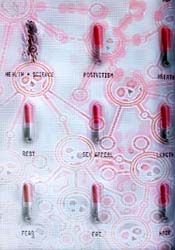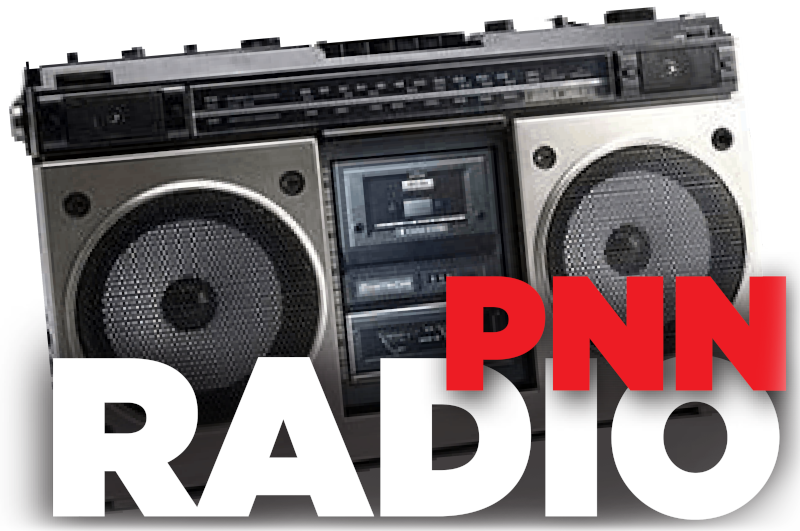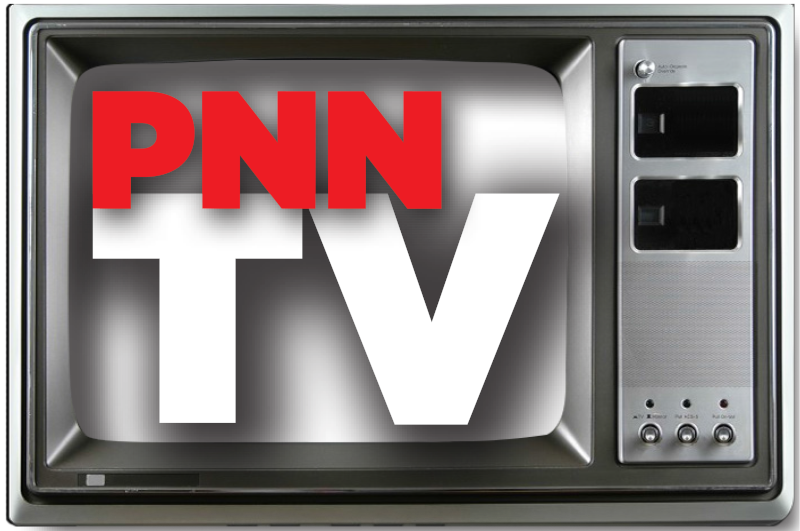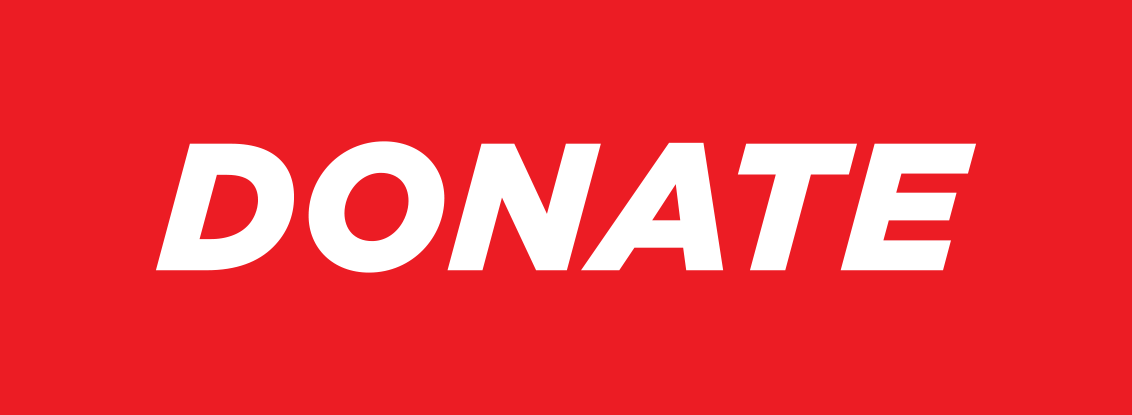A first person narrative on Harm Reduction and the War on drugs
 |
|
by Anna Morrow I'm walking north on Van Ness headed for the War Memorial building. It's early on a weekday morning; the day is crisp and bright and I'm feeling lucky. I have been granted a full scholarship to attend the 3rd annual Bridging the Gap conference in San Francisco. People from all over the world will be gathering to share information and discuss issues relevant to drug addiction and treatment, from a Harm Reduction perspective. I'm new to the world of Harm Reduction, and as a refugee from the drug wars, am intuitively drawn to learn more about this (not so new) drug treatment model. I enter the heavy glass and brass doors and am immediately swallowed into the giant marble lobby. My eyes adjust to the dim light and my body stiffens with the drop in temperature. I look around and see many who appear to be, like me, from the front line of the war on drugs, gathering schedules and packets. I press my name tag against my shirt as I follow a thin stream of people walking upstairs. I find a plush seat in the balcony and relax into the expansive hollow of this old theatre. I close my eyes to feel the undercurrent of anticipation swimming up from the seats below. This is hardly a sold-out event, and I have the distinct feeling that I am participating in something cutting-edge; like those of us gathered here today will be seen by those living 50 years from now as “ahead of our time.” I see people of varied races, incomes, and education, and again feel lucky to be among them. The day begins with an introductory speech from our infamous mayor. I let his words float around my ears without actually grasping at the full message. I don't want to get caught up in my own cynicism before the day has even begun. I applaud when he's finished letting the excitment of the day squash the lingering memory of Wille saying " We are about making life wonderful for everyone!" I clap harder, and remind myself that this is the mayor of the first city in the nation to adopt Harm Reduction as it's official policy. The first speaker is an older gentleman from Australia named Tony Triningham. With a fuzzy white beard and a round, protruding belly, he looks warm and cuddly, like a big koala bear. We are told that his life work has changed since hgis son Damien died of heroin overdose in 1997. Since then he has been on a mission to eradicate the prejudice and stigma associated with drugs and drug users. It is clear that this man loved his son and still does. He speaks from his heart, and his story resonates and reflects a similar truth for many of us here, I'm sure. Our friends and loved ones are dying, and it hurts. This war on drugs is not working. Our family members are locked up or buried, and our society’s morals around drugs and drug users does not represent the individual realities we are all living. He has tears in his throat as he prepares to show us slides of his son. As the lights go down we are taken into a world of memories: Damien, tiny and new swaddled tightly in a blanket, at 4 riding his bike and displaying an exaggerated toothless smile, at 7 in his Halloween costume, clutching his bag of candy, at 10 playing soccer, captured in full stride running across the field, at 12 posing with a trophy lifted high above his head, at 18 in his graduation cap and gown, and then at 24, his decomposing body sprawled across the dirty back stairs of a building, dead, with a syringe laying next to him. It is an avoidable collision with truth: we do not wage a war on drugs. We wage a war on people, on our brothers and sisters, wives, husbands and lovers. And on our children. The lights go back up and I can not disguise my own tears. People around me are sniffling and woman are searching for tissues. he has made his point. The room seems to fill with a silent yet palpable aura of empathy. I can feel it hovering around me and renew my commitment to help end the suffering any way I can. It is past time to end the war on drugs. I am hoping that Harm Reduction will be seen as the anti-war movement of the 21st century. We are all affected by the devastation of this war. When one addict dies, everyone who ever knew or loved them is affected; lives forever altered by loss and sorrow that can not be undone. People may hate drugs, but we love people who are addicted to these drugs. The horrendous fate of this disease is, There is a different value placed on the death of drug addicts. Addicts are forced to pursue their addiction in such secrecy and isolation that they are dead before they can receive any help. Harm Reduction recognizes that a person must first be kept alive if there is any hope for recovery. Where there is life there is hope. Harm Reduction sees the reduction of drug-related fatalities as a primary goal, not neccesarily abstinence. After the presentations in the auditorium, the conference participants are given a selection of more intimate workshops to choose from. I consider attending Fundamental Principles of Harm Reduction, but instead choose Facilitating Group Process in Harm Reduction. The small room is a welcome contrast to the enormous auditorium we had been in all morning. I take a seat towards the front and study the faces of the people filing in. How many here are recovering addicts like me? More than half, I suspect. Almost everyone else is probably a drug counselor or therapist or nurse. A tall, slender woman with salty-dark, shoulder-length hair steps to the front of the room. On a flip chart she draws a straight line in blue marker, then divides the line in half. "This is the way abstinence based treatment programs view addiction," she explains. “Addicted/ Not Addicted. Which, in terms of illegal drugs, equates to Use/Not Use. This model leaves very little room or opportunity for improvement, progress and success in treatment, and sees abstinence as it's main goal.” “Harm Reduction, on the other hand, sees drug use as existing along a continuum, with many points along a spiral.” She pauses to flip to a new sheet and draws a spiral. On the very outer point she writes, “No Use.” On the very center point she writes, “Chaos.” Unlike the black-and-white approach of the abstinence model , Harm Reduction believes that drug uses ranges from “no use” to “chaos,” with 5 points in between: Experimental, Occasional, Recreational- (where there will be some pattern and purpose to the use)- Heavy, and then Abuse. For Harm Reduction, abstinence is seen as one of many options beneath the umbrella of treatment options. Having illustrated these basic differentiations between the two schools of thought, she is ready to address the therapeutic components of Harm Reduction. The group therapy setting is intended to provide non-judgmental support without demands or pre-conceived expectations. Addicts are treated with dignity and respect and are viewed as experts in their own addiction and treatment. The facilitator is seeking to help the individual determine a goal, help them identify behaviors that may be hindering progress towards that goal, then managing or eliminating that behavior. In all instances therapy is facilitated- not enforced- and individuals are not coerced into meeting outside expectations. I can't help but think that if Harm Reduction had been available to me I could have saved myself years of self-destruction. As it was, there was no place to take myself in the early phases of relapse that could have provided a safety net to my inevitable fall from grace. My therapist at the time (whom I had been seeing for some 4 years out of 8 years of clean time) was unable to engage in covert treatment with me while I was using. We had a close relationship and so I, in my typical caretaking manner, was unwilling to jeopardize her ethically or legally by insisting that she see me anyway. So I left. It was clear to me that I was being "bad" by using and the only way for me to reclaim my previous status as a “good client" was to stop using. I chose to be bad; I was sucked willingly and somewhat gratefully into the familiar relief of drug addiction. Even though I had worked so hard to rebuild my life, one day at a time for so many years, the minute the drugs hit my system I was more than happy to leave it all behind. Once sincerely devoted to my recovery, my loyalty had instantaneously shifted back to drugs. I knew where that road would inevitably lead me: nowhere at best, or, more likely, to self-inflicted, self-destruction. But I didn't want to stop. As long as I could get high, I didn't care. When I was forced to forsake the valuable and supportive relationship with my therapist, I entered the mouth of the dragon alone. There simply was no other option for me then. I imagine for a moment how it might have been to come to a supportive, non-judgmental group while my life was unraveling. How would it have been to have someone near by as the slow erosion of my life took place? Could some of the pain been avoided if I had been eligible for treatment and services regardless of my active drug use? Instead, I slipped further and further down into the marginalized world of drug addiction. I was engaging in criminal activity – I was a criminal- and the negative consequences of identifying as an addict far outweighed the benefits of seeking treatment. As long as I was using, I had to make sure know one from the outside found out. Isolation is a toxic by-product of the war on drugs. How obvious it seems to me that to remove the stigma associated with drug use is to free those struggling with addiction to seek treatment and support. for many years I lived a double life. I spent much of my energy attemting to conceal my drug use from the people around me. I had managed to lie so effectively to others that I failed to realize the lies I was telling myself. This created a deep denial that made treatment for early recovery very difficult. Looking around the room, I wonder how many others had been forced to get clean in the white-knuckle, cold-turkey, grip-of-death way that I did. How many others not here died before that time came? And why should it be so hard to get help? The cruelty of forcing people with a disease to go through so much suffering enrages me. In our society’s unwillingness to confront the basic facts of this disease, such as relapse as a normal and expected component of recovery, we are shunning our fellow human being into a corner with fatal consequences. The day ends with a panel discussion about the recently passed Proposition 36, which is intended to divert non-violent drug offenders from incarceration into drug treatment. The voters in California passed this legislation by a landslide, perhaps pointing to the collective renouncing of the hypocrisy and ignorance of the war on drugs.How can marijuane, for which there has been no reported case of human death from overdose be on the arbitrary list of illegal drugs, when alchol, which has an annual death toll in the US alone of tens of thousands, be excluded? The annual arrest of nearly a million and a half people suspected for drug offenses, most of those for simple possession of small quantities, is frightening evidence of far we have traveled down the wrong road. In California alone, 23 prisons have been built in the last 15 years at a cost of 4.2 billion, with still more under construction. Reports show that for every dollar spent on quality treatment, up to 7 dollars are saved in the broader society in law enforcement and health care costs. If this new law is implemented with minimal corruption of its intentions, 1.5 billion dollars in prison costs alone could be saved over the next 5 years. I leave the conference hopeful that we are on the cusp of a pardigm shift. California voters spoke up to say we are no longer willing to see our friends, families and loved ones locked up without first offering them a chance to get their lives together, outside of prison walls. Harm Reduction offers a realistic, effective and compassionate way to begin healing the destruction caused by the war on drugs. |



